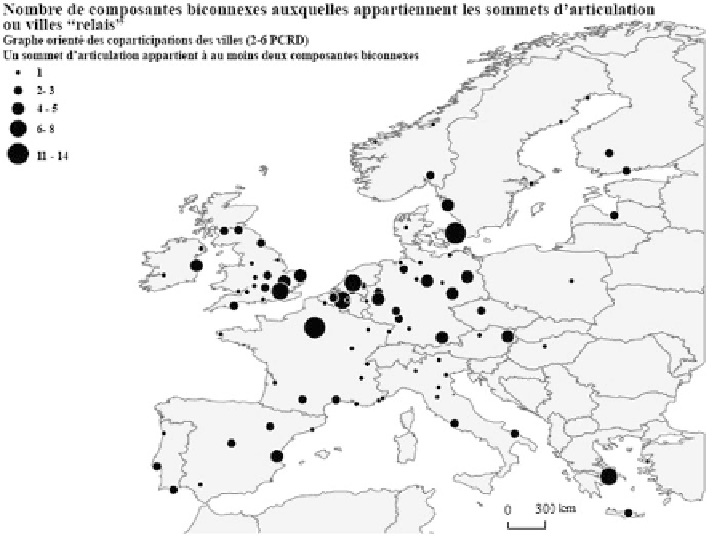Information Technology Reference
In-Depth Information
Fig. 11.5
Relay-cities identified as articulation nodes (1986-2006) (Source: NBIC-Euro,
Comin
,
2009
)
interfaces. At the national level, relay-cities tend to be university cities and regional
metropolises (e.g., Ålesund, Mytilene, Toulouse, Tampere, Bordeaux and Leipzig)
or peripheral European capitals (Helsinki, Dublin, Heraklion and Budapest). Few
relay-cities act at the global level; Copenhagen and Paris appear to be strongly
specialized for this function, while other large international metropolises, such as
Brussels and London, also tend to exercise this function.
11.5
Conclusion
In conclusion, this analysis of networks dedicated to R&D in converging technolo-
gies underlines the fact that patterns of accumulation in an urban network of knowl-
edge flow are strongly driven by the pre-existing structure of the system of cities.
Thus, the final impact of the knowledge-flow network on the pre-existing structure
of the system in which it evolves is rather marginal. However, these results empha-
size the trend for larger cities to capture knowledge spillovers, making it possible to
predict the strength of the structural hierarchical disparities within the European
urban network. This trend prefigures the reinforcement of metropolitan patterns

Search WWH ::

Custom Search